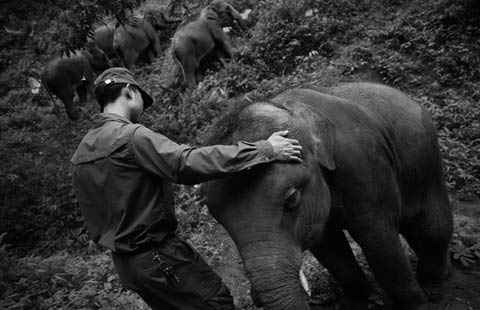Safety questions raised on cricket gear after Hughes' death
Updated: 2014-12-01 08:51
(Xinhua)
|
|||||||||||
|
 |
|
Spectators give a minute's applause to Australian cricketer Phillip Hughes before England's international rugby test match against Australia at Twickenham Stadium in London, November 29, 2014. More than 82,000 fans and the players and officials of the England and Australia rugby teams were united in a minute's applause in tribute to Australian cricketer Phillip Hughes, who died this week after being struck on the head while batting. [Photo/Agencies] |
NEW DELHI - As the world comes to terms with the death of Australian cricketer Phillip Hughes, questions are being raised about safety in what has for decades been known as the gentleman's game.
Experts and former cricketers in India, where cricket is often considered a religion, say that the game cannot be linked to fatalities, and Hughes' death is an exceptional case, while some say that "bouncers" -- the style of pitch that ultimately killed Hughes, should be banned fully so that such incidents don't reoccur.
"The 25-year-old batsman died of his injury after being hit by a lethal ball. He was wearing a helmet, but even still sustained a fatal injury," said Mukul Ghani, a Delhi-based cricket expert.
"This is unbelievable. But, I think that it's high time that bowlers are banned from delivering bouncers," said Ghani said.
Hughes was struck beneath the ear, just outside the helmet, by a bouncer during a match between South Australia and New South Wales in Australia on Tuesday. Two days later he became the first international cricketer to die from an injury while batting.
Despite wearing a protective helmet, Hughes never regained consciousness and died at a hospital in Sydney.
"Cricket is not a game worth dying for. He should have been sporting better headgear. He was wearing a Masuri helmet, the safety standards of which have now been exposed. I think that Indian helmets would have had given him better protection," said expert Ravi K. Singhania.
Most top Indian batsmen prefer to wear Forna helmets.
|
 |
|
A bat and cap are placed on the pitch in memory of Australian cricketer Phillip Hughes before the Autumn International rugby union match between Wales and South Africa at the Millennium Stadium in Cardiff, Wales November 29, 2014. [Photo/Agencies] |
"Compared to Forna, the Masuri helmet is lighter and fancier, but it also compromises on safety aspects," former Indian wicketkeeper Kiran More said.
Masuri, the UK-based manufacturer of the helmet worn by Hughes, has said that the helmet can't be blamed for Hughes' death as the injuries were sustained in an area of the head that is difficult to protect.
"From the footage and pictures currently available to Masuri, it appears that Hughes was struck by the ball to the rear of the grille and below the back of the shell," Masuri, one of the world' s largest helmet producers, said in a statement Wednesday.
One of India's battling legends, Sunil Gavaskar, now retired but a player during the pre-helmet era, said he never considered cricket to be a dangerous game.
"You learn to bear the pain. But this was a freakish accident. One should not blame helmet manufacturers for this. Many a time a batsman has been hit on the helmet and nothing happened because he was wearing one," he told the media.
"It's time that cricket administrators ensure that such incidents are not repeated in the future," Ghani recommended.
Today's Top News
One-child allowances continue with second birth
Editorial: Get HKSAR back on track
Women still outnumbered in top jobs
China, US targeting terror online
Gates has cameo in anti-smoking video
UK brothers jailed for attending terror camp
Visa change may boost tourism to the US
British couple arrested on suspicion of Syria-related 'terror offences'
Hot Topics
Lunar probe , China growth forecasts, Emission rules get tougher, China seen through 'colored lens', International board,
Editor's Picks

|

|

|

|

|

|





